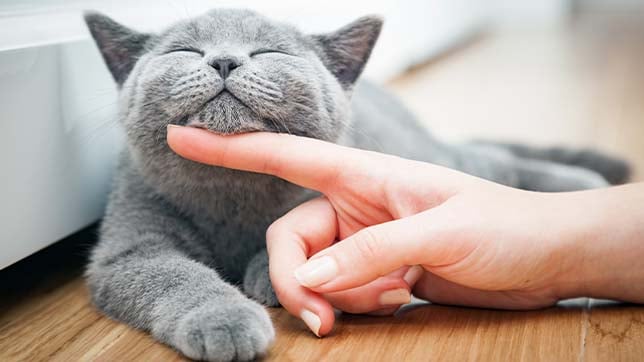11th February 2022
Cat behaviour explained
A cat’s body language is often quite subtle, so it can sometimes be difficult for an owner to understand how their pet is feeling and what they are trying to tell them. However, each individual cat is different, so there is no guarantee that the behaviour and body language of one cat will mean exactly the same thing as it does with another. Here is our guide to some of the most common forms of cat behaviour.

Touching noses
This is a way for cats to greet each other, and is similar to a human handshake. Cats use their powerful sense of smell when employing the nose rub to ascertain whether another cat is part of their ‘group’, and it is also a method of marking their territory. This friendly, trusting behaviour is one way they share the scents they collect with other cats.
Head butting
Otherwise known as bunting, head butting is what kittens do to their mothers when searching for somewhere to nurse. In adulthood, cats do it to rub facial pheromones on to people, other cats or objects, and it is regarded as a stronger indication of trust than touching noses.
Gravitating towards people who don’t like cats
The natural reaction of someone who loves cats is to call them, spread their arms out and approach them. Ironically, cats can often view this as threatening behaviour. The person who doesn’t like them will refrain from drawing attention to themselves, which unwittingly makes them more attractive to the cat because their behaviour is perceived as less threatening.
Lying on their back, exposing their belly
By being so far removed from a predatory stance, the cat is putting themselves in a vulnerable state by adopting this particular position. It demonstrates that they know you are not going to hurt them, and is a sign of happiness and relaxation. Nevertheless, be careful how you respond to this type of behaviour, as some cats may perceive your approach as threatening.
Hissing
This defensive form of behaviour is a prelude to fighting, and could also indicate that the cat is frightened. The animal might be trying to demonstrate that they are the alpha cat. Unneutered males can hiss loudly before a fight.
Chattering teeth
Usually signalling excitement or frustration, cats chatter their teeth when they see prey through a window that they can’t access, such as a bird or squirrel. The jaw movement and chattering noise is similar to that of big cats when they administer their killing bite to catch a bird or mouse quickly. It can sound like a shivering human.
Eating grass
Although this behaviour may seem unusual, eating grass aids cats in clearing the digestive tract of fur and bones from prey. The folic acid present in the grass is a vital vitamin for cat bodily function and helps with haemoglobin production. Some believe it can also relieve cats of sore throats.
Purring
Purring is traditionally seen as a display of contentment, and is a way for a kitten to bond with their mother. When a cat purrs whilst in a vulnerable position, such as on their back and exposing their belly, it is the equivalent of a smile. They can also do it when hungry, nervous, and at various other times.
Urine marking and spraying
Usually territorial behaviour, this is a way of cats letting others know they have staked their claim over something. Both horizontal marking and vertical spraying can be seen more commonly in cats that haven’t been spayed or neutered. It is instinctual.
Scratching and clawing
This is territorial behaviour as well, but there are also other reasons why cats scratch. They have pads under their paws that leave a scent on areas they have scratched, plus it conditions their claws. Buy a cat scratching post to stop them from using your furniture.
Hiding
A cat can hide for various reasons. They may be anxious, scared, stressed or in pain. If they are hiding a lot, take them to the vet to rule out any medical problems.
Meowing
A kitten will meow at their mother when they want something, and the behaviour will usually be repeated when attempting to gain their owner’s attention. Cats don’t usually meow at each other, as they tend to stop when they get older.
Looking for more cat advice?
We’ve written some handy cat advice guides, to help you unlock the secrets of your mysterious moggy.
Need cat insurance?
Cat insurance can help cover the cost of veterinary treatment if your cat gets injured or falls ill.
We know pets
Our pets are part of the family. To achieve our vision of a better future for pets everywhere, we work with our partners, vets, and other veterinary professionals who are pioneering the latest advancements in animal care. Our campaigns, articles, and events are crafted to support, educate, and celebrate pet owners, while our policies are designed to provide peace of mind at an affordable price.
Yet our policies don’t just protect against the unexpected – they have purpose, too.
Since we were founded over 25 years ago, we've provided industry-leading policies that protect the nation’s pets, while also making a difference to animal welfare and our planet. Thanks to you, our policyholders, we've donated over £9 million to more than 830 animal welfare charities and conservancies, helping to support vulnerable pets and wildlife around the world.
We’re proud to be wildly different. Are you?
